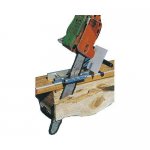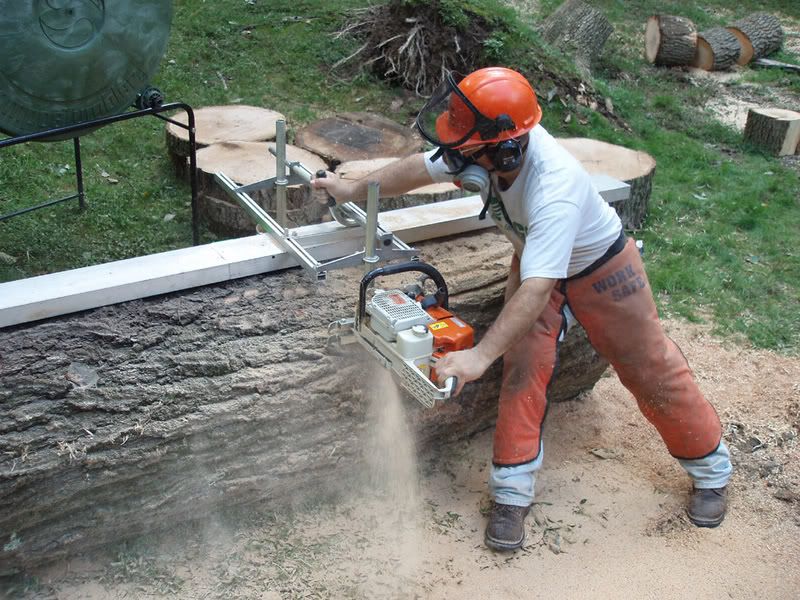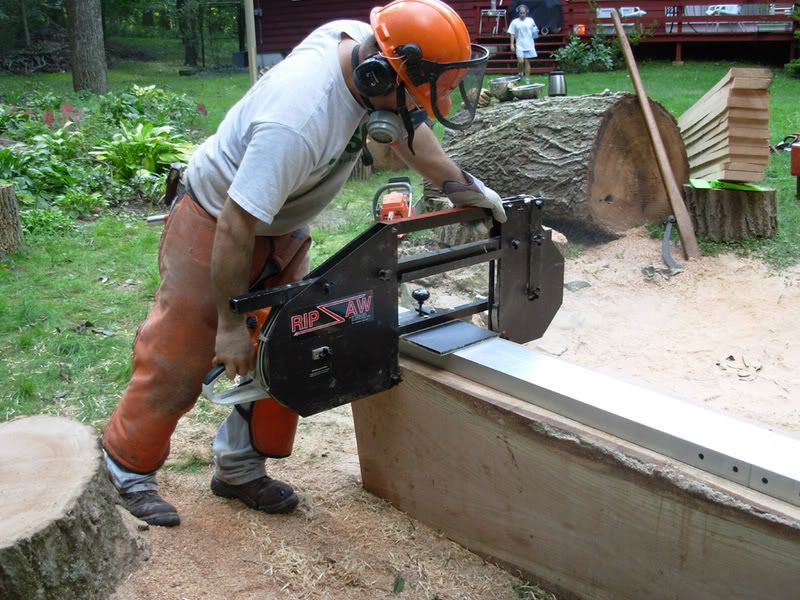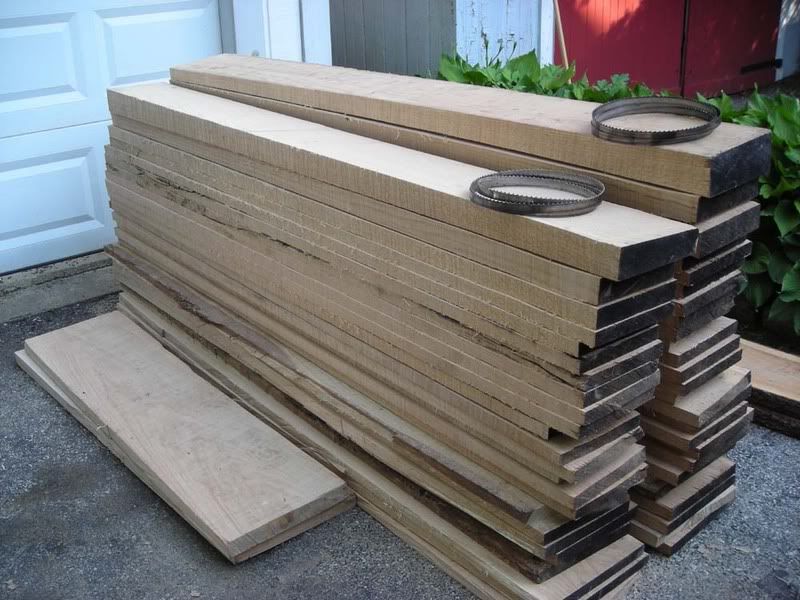Notes
I just wanted to add a few things here about my process of cutting up these logs.
One of the things that I've heard a lot about is chains. I started with a regular cross cut chain,
this worked just OK, it was a lot of work to cut the hard wood, and left a very rough surface.
Next I re-filed my chain to what is called a ripping chain by some,
this is where the cutters are filed to a 5 degree angle on the cutters, but no cutter are removed.
This was an improvement over the standard cross cut chain, and I think it would work well on softer wood.
I next got directed to the Granberg style of ripping chain (thanks CJ & others),
the Granberg style Ripping chain has a set of teeth that have had every other set (pair) of top plates removed.
(A set meaning a tooth from each side when possible. See the picture below.)
You would take 2 teeth next to each other, one on one side and one on the other,
and grind off the top plates using a bench grinder, Dremel, or belt sander.
You don't shorten the tooth at all but merely remove the top plate that sticks out to the side of the side plate.
What's left on top is nothing wider than the thickness of the side plate.
The tooth with the top plate removed now goes through the wood with less resistance than pulling
a top plate along with it and effectively severs the wood fibers.
The next set of teeth to go through with the top plates, clean out all the severed fibers.
This results in less heat buildup, faster chain speed, and smoother cuts with reduced clogging.
This set up was a great improvement, the saw worked so much better using this chain.
I could keep the saw hogging through logs all day long, the saw would run just below the
"four stroking" you get when a saw hits it's rev limit, which is the peak of the saw's power band,
right where you want your saw to be running. I ran the saw on good quality synthetic 2-smoke oil, at 32:1,
and I checked the plug frequently, and I always came back with a nice tan color on the plug.
The saw would smoke a bit on the first run in the morning, but from there, it was not smoky at all,
and there was only a slight build up of splooge on the muffler.
The saw, being an old one (circa 1976) Husky 85 cc was a bit of a handful to start in the morning,
having no decompression valve, but it would only take about 5 pulls to get it going in the morning.
Once it was run, it would always start on the 1st or second pull of the cord.
This was great, when I forgot to fill the saw, and I had to restart the the saw while in the log on a cut.
Some other things about the saw. Like I said, it is an old one, but this saw is good for milling (IMHO)
as it has the old style long stroke motor. It has a bit slower chain speed than more modern saws,
but I think this too is an advantage for milling.
The other thing that is good with this saw is that you can refill the gas and oil while the saw is on the mill,
sideways, but one bad thing is that I have to remove the mill to adjust the chain tension.
As the saw is heavy, it is not a bad choice for milling, the weight is on the log,
you are not carrying it around all day. If I had to lug this into the bush to cut lumber,
I'd be thinking twice about it, as well as my all steel milling attachment,
maybe I'd redo the whole thing in aluminum, but as I doing this off the back of my little van,
this set up is fine. The fact that I bought it used for 28,000 yen ($250 US) also made it a great choice for me.
I started out filing only once or twice a day, I have to admit, filing chain is not exactly my idea of a good time!
Depending on the width of the log I was cutting, I'd sharpen the chain fairly often.
On the super wide boards, 50 cm (20") I found that with the Keyaki,
it was good to sharpen the chain every two or three boards. A lot of this wood was highly figured,
and I cut through a lot of crotches etc, so it was HARD work.
I found that by taking the time to sharpen the chain more often, I got nicer cuts and the saw worked better,
I guess my point is that if you are going to do this, take the time to sharpen you chain.
Something else that really helped was putting an auxiliary oiler on the milling unit,
it takes a bit of tweaking to get it right, but the extra oil on the bar makes a big difference.
If I where to be doing this on an ongoing basis, I'd change a few things,
one is I'd make some stands for holding the logs off the ground...
(Something like this, they would have to be well built and wide, and stable.) ....
and I'd make a tripod with a chain hoist to lift the logs around, and onto the stands......
(I found these pics and a lot of great ideas on Bill's Wood Creations)
Putting the logs on stands would remove a lot of the grunt work, and keep you off the ground.
I was luck on all but the last day of my milling to be blessed with glorious sunshine,
but if you were doing this in the rain, or the snow, well,
standing up compared to kneeling, is obviously a great thing!







 You lost quite a bit of sleep that week, if I remember correctly?
You lost quite a bit of sleep that week, if I remember correctly? 









